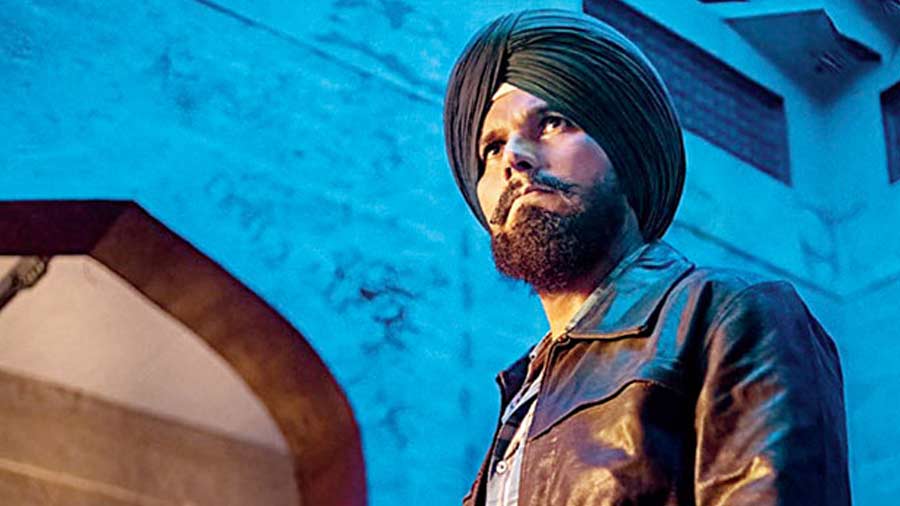The Punjab in CAT is not one that has been romantically fed to us for decades. No meet-cute in sarson ka khet. No boisterous, stereotypical men-will-be-men banter chugging down Patiala pegs and breaking into bhangra. No cutting away the conversation to reference lassi and paratha or given the season now, sarson da saag and makki di roti.
What we have instead is Punjab as it is. A state that has fought insurgency for many years and still continues to battle rebellious voices within, most arising out of the tricky politics of the North as well as a fallout of the drug menace that has unfortunately come to define the state for decades.
It is in this trigger-happy terrain of deceit and double-cross that Gary aka Gurnaam, played with intense quietude by Randeep Hooda, is taken back to his painful past in the pilot episode. As a teenager, Gary operated as a CAT, a reference to infiltrators planted by the police in rebel groups during the height of separatist insurgency in the state decades ago. Having lost his parents to a double murder, the echoes of which reappear in his present, Gary becomes Gurnaam, living an under-the-radar life as he brings up his much-younger siblings.
When the ever-growing tentacles of the region’s drug mafia, under the aegis of its all-powerful female politician (played with steely menace by Geeta Aggarwal Sharma) threatens to claim his brother, Gurnaam comes out of the shadows to become a CAT once more.
CAT hits the ground running, but then effectively slows its pace to become a slow-burn thriller. Throughout its eight episodes, showrunner Balwinder Singh Janjua keeps the viewer guessing which side of the ethical divide all its players — good, bad, ugly — are on. For in this land where gaana flows as easily as guns — at one point a Honey Singh-Harrdy Sandhu hybrid is told almost laughingly by a gangster, “Tuney gaano mein pakdi hogi, main roz chalata hoon yeh bandookein” — no one is to be trusted. Everyone’s moral compass keeps shifting — most of all that of the easy-talking cop Sehtab Singh (Meel Patthar’s Suvinder Vicky is the scene-stealer in many instances) — and that’s what keeps CAT consistently engaging, even when some of the characters and circumstances come off as either too convenient or convoluted, and sometimes both.
It is to the credit of Janjua and his team — directors Rupinder Chahal and Jimmy Singh (who’ve co-written the screenplay with Anil Rodhan) — that the sights and sounds of Punjab explode in a way that we have so far seen streaming platforms flirt with showing only the UP-MP hinterland.
CAT is a Punjabi original —- you would do well to watch it in Punjabi with subtitles than switch to the awfully dubbed Hindi version — that contextualises both its culture and its conflict, making the local global, even as it explores the state’s fascination for fast cars and loud music, emigrating to Canada at the drop of a bullet and the ostentation that is somehow ingrained in its DNA. It is to the credit of the writing that brings rich local detail to the story, but also tempers it with a certain rootedness.CAT can come off as vacuous and under-researched in parts — Gurnaam’s return to becoming a double-agent after so many years shows none of the rustiness it should have — but the story remains gripping, even when the twists become familiar and predictable. The show’s large ensemble cast brings in authenticity — a special word for Hasleen Kaur’s understated female cop whose characterisation enables CAT to comment on both gender politics and caste divide.
CAT is far from perfect, but as a rare look at Punjab and its politics in the here and now (comparisons with Udta Punjab are imminent and often necessary), it is a rich addition to Netflix’s burgeoning kitty of Indian originals. And then, of course, is a blistering act from Randeep Hooda, whose eyes in just eight episodes of this series speak more than many mainstream Bollywood actors of today have managed in their entire careers.











